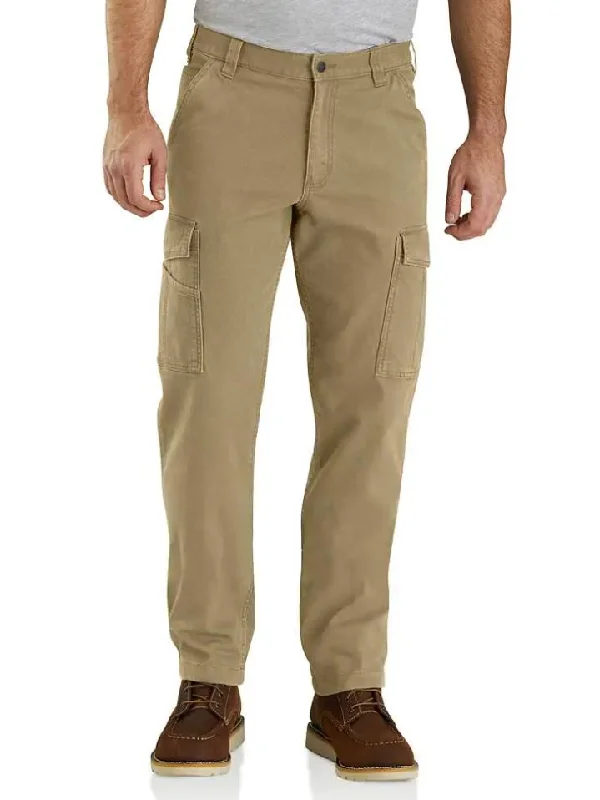Carhartt 103574-253 Mens Rugged Flex Rigby Cargo Pant Dark Khaki (BN3574-M)
These men's cargo pants have enough flex that you can easily crouch down to fix a busted tail light. Plus, the durable mid-weight canvas can handle kneeling, squatting, and crawling through brush. They've got side, back, and cargo pockets, including secure storage for your phone.
Men's mid-weight canvas cargo pants that move with you, not against you.
Availability Subject To Change. Some Sizes Could Be Out Of Stock. Please Call Store For Availability 561-748-8801
- 8-ounce, 98% cotton / 2% spandex canvas
- Built to move with Rugged Flex® stretch technology
- More room to move with a comfortable fit through the seat and thigh and a straight leg opening
- Strong sewn-on-seam belt loops
- Right-leg cargo pocket with secure cell phone storage
- Left-leg cargo pocket with utility pocket
- Hook-and-loop back pockets
- Style# 103574 253
The year 1889 was a time of steel, steam, and locomotives.
It was also when Hamilton Carhartt & Company was founded by its namesake (known affectionately as “Ham”) and began producing overalls with two sewing machines and a half-horsepower electric motor in a small Detroit loft. Early failures led Hamilton to focus heavily on market research, and after talking directly with railroad workers, he designed a product that truly fit their needs. Under the motto, “Honest value for an honest dollar,” the Carhartt bib overall was created and rapidly evolved into the standard for quality workwear.
During the 1970s, massive orders for the construction of the Alaska Pipeline helped grow the brand, and Carhartt undeniably showed that its products could survive and thrive in the most rugged conditions on Earth.
The Carhartt brand became popular with consumers outside blue-collar trades during the 1970s and 1980s. More people began to learn about the brand as big names in the hip-hop music industry started to wear Carhartt. Interest expanded across the pond in Europe, leading to the creation of the Carhartt Work In Progress label in 1989, which is targeted toward consumers in Europe and Asia who value refined details and design that remains true to Carhartt’s brand DNA.
By 1910, Carhartt had grown to include mills in South Carolina and Georgia, as well as sewing facilities in Atlanta, Detroit, Dallas, and San Francisco. The company expanded internationally to Walkerville (Ontario), Toronto, Vancouver, and Liverpool. A Paris facility and a New York office and warehouse later followed.
arhartt has global operations in the U.S., Mexico, and Europe. The company employs more than 2,200 American workers, 900 of whom are UFCW union members. Carhartt’s “Made in the USA” line is inspired by American workers and features some of the company’s most iconic garments. These products are made in four facilities located in Kentucky and Tennessee.
Over the past 15 years, Carhartt has produced more than 80 million garments and accessories in the U.S. The company also sources heavily from U.S. suppliers such as Mt. Vernon Mills in Georgia (fabric) and YKK Snap USA in Kentucky (snaps and buttons), among others. Carhartt. Outworking them all since 1889.

